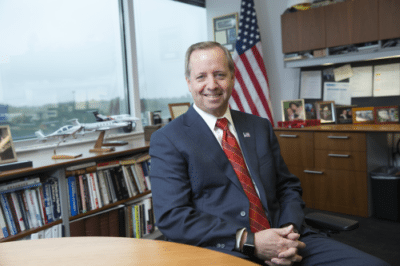We look forward to a new year and new opportunities for innovation and growth in the government contracting community. This past year, we experienced an increased emphasis on big data, insider threat, merging technology with health care, and the internet of things, among others.
WashingtonExec reached out to those most knowledgeable and experienced in the federal contracting space. We asked executives in and around the Beltway for insight on the direction they see the government contracting community heading in 2018. Topics discussed include M&A activity, public/private sector collaboration, cloud computing, the incoming millennial workforce in defense/IT/health care, talent retention and more.

Next in the series is Brad Antle, CEO at Salient CRGT, a leading provider of health, data analytics, cloud, agile, mobility and cyber solutions. Here are his insights:
I believe the health sector will continue to see consolidation and growth. The demands from this sector to bring the efficiencies and benefits of modern technologies to reduce costs, enhance security/privacy of data, and improve patient outcomes are significant.
Currently, the sector is very fragmented with many smaller companies providing great niche solutions. These need to be coalesced and brought to market on a larger scale.
Today, robust and meaningful analytics hold the potential power to transform health care organizations and unlock new sources of value. Health analytics is primed to solve these challenges that have plagued the health care industry for decades.
M&A will continue as a mechanism for smaller mid-sized companies, those who have graduated from the small business preference programs, to gain escape velocity. M&A provide a mechanism to gain the past performance qualifications and added maturity across a broad range of elements critical to be successful in the full and open competitive marketplace.
Whether small companies coming together in cashless combinations, entering into joint ventures, or seeking a strategic partner where their capabilities and/or customers have a natural fit for growth. Budgets will depend on the customer and the sector. Some will be significantly challenged and others will have strong budgets for modernization. Larger platforms will have greater access across those customers and can invest where the budgets will be for robust.
Labor markets are tight and clearances are still very challenging to obtain and even cross over. With more than a third of career federal employees eligible for collecting their end-of-career benefits by the end of GFY 2017, combined with a strong economy, the likelihood of a rise in retirements is high. This will increase the demand within the private sector to fill the breach. The private sector worker is still attracted to challenging assignments, good pay, solid benefits and some flexibility.
My biggest concern centers around the lack of long-term budget clarity. The continuing resolution approach we have been leaning on the past nine years creates uncertainty and the inability to plan long term. This has been problematic across the government.
On the exciting end of the spectrum, there will be a growing interest in as-a-service model for more and more government services. Clearly, there are opportunities for outsourcing, but many government customers would like to get out of the IT business and concentrate on their mission, where outsourcing is not viable.
If they can buy their IT needs as a service, where they don’t have to worry about the hardware and software, only the capabilities that they need, this simplifies their planning and daily execution. Imagine a virtual desktop environment where clients reach into the secure cloud for their IT needs.
What future collaboration topics and projects should take will take place between the public, private and academic sectors?
Implementing shared services and improving cyber defenses. Cybersecurity is an area that needs to be more collaborative across the public, private and academic sectors.

